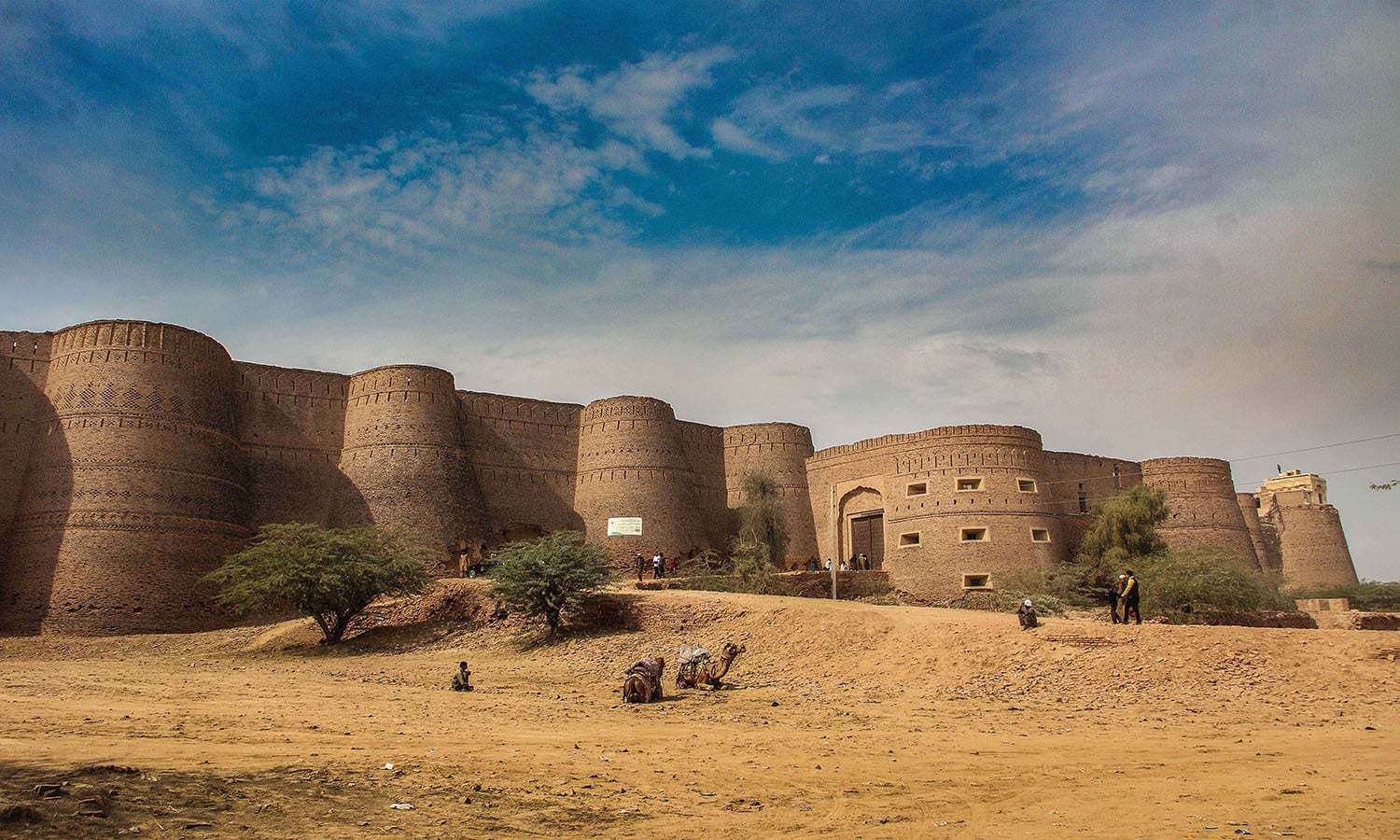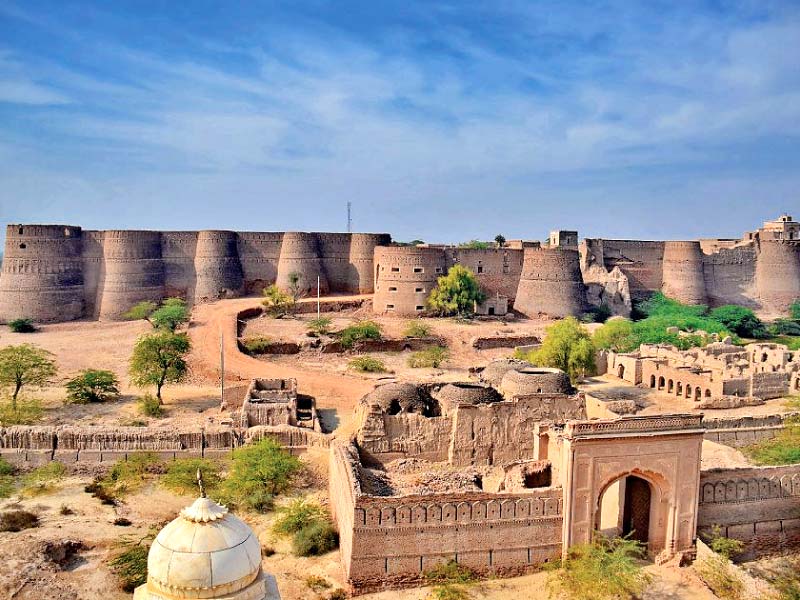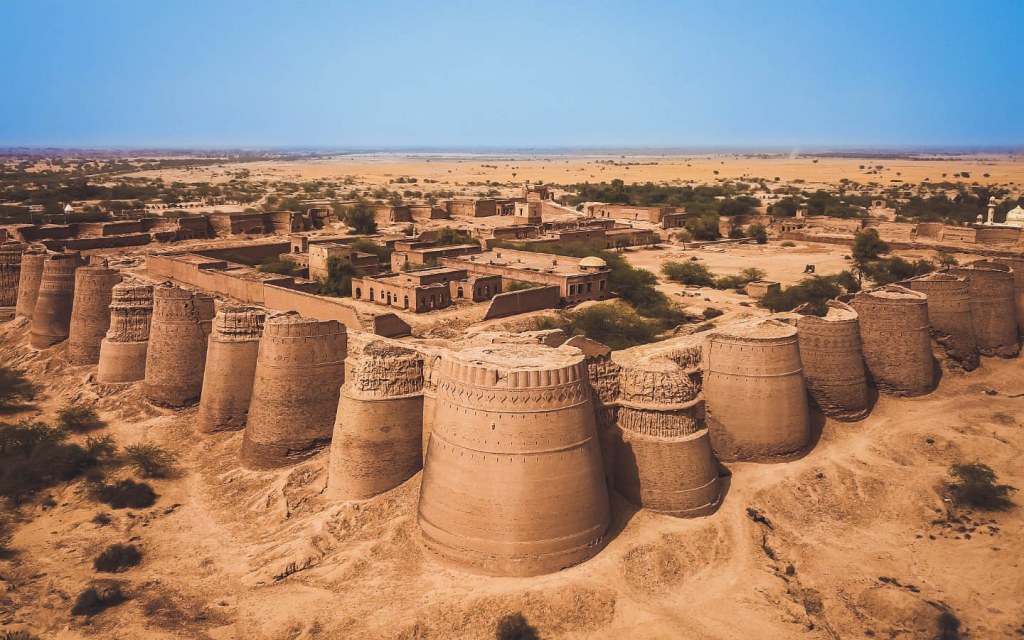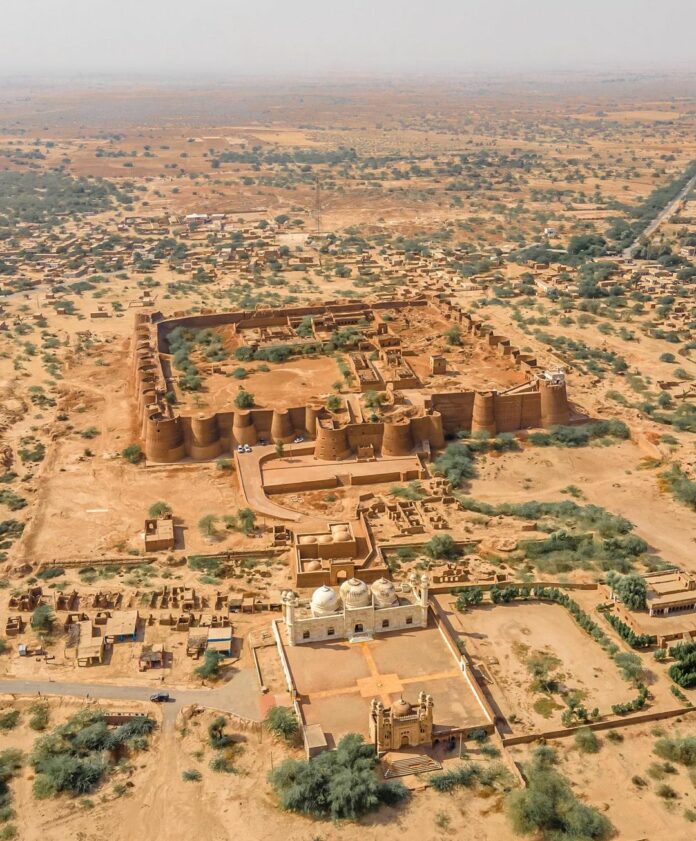Derawar Fort, a magnificent fortress nestled in the heart of Pakistan’s Cholistan Desert, stands as a testament to the region’s rich history and cultural heritage. With its towering bastions visible from miles away, Derawar Fort has intrigued historians, archaeologists, and tourists alike. This article delves into the fascinating history, structure, and ongoing efforts to preserve this iconic edifice.
A Glimpse into the History of Derawar Fort

Derawar Fort, located approximately 20 km south of Ahmedpur East in Bahawalpur District, Punjab, has a history that dates back to the 9th century AD. Originally built by Rai Jajja Bhati, a Hindu Rajput ruler of the Bhati clan, the fort was initially known as Dera Rawal. Over time, the name evolved to Derawar, its current name. This fortress was constructed as a tribute to Emperor Rawal Deoraj Bhati of Jaisalmer and the residents of Bahawalpur.
The fort changed hands in the 18th century when it was seized by the Muslim Nawabs of Bahawalpur from the Shahotra tribe. It was then renovated in 1732 by Nawab Sadeq Muhammad, an Abbasi ruler. However, the fort briefly slipped from their control in 1747 due to political distractions but was reclaimed in 1804 by Nawab Mubarak Khan. Interestingly, 1,000-year-old catapult shells were discovered near a decaying wall in the fort, further adding to its historical significance.
Nawab Sadeq Muhammad Khan Abbasi V, the last ruler of the Bahawalpur state, was born in this fort in 1904. Eventually, the British took over Derawar Fort, using it as a prison and a site for executions.
Architectural Brilliance of Derawar Fort

Derawar Fort is a massive square structure built from clay bricks, featuring an imposing design that has withstood the test of time. The walls of the fort stretch for 1,500 meters and rise up to 30 meters in height. The fort boasts forty circular bastions, each standing 30 meters high, which are visible from miles away in the Cholistan Desert. These bastions are adorned with intricate patterns carved into the bricks, adding to the fort’s aesthetic appeal.
Inside the fort, remnants of structures decorated with tile and fresco artwork offer a glimpse into the artistic sensibilities of the past. The fort’s design is a prime example of the architectural ingenuity of the period, showcasing forms derived from square brick construction that date back to the 16th and 18th centuries, with some elements possibly dating as early as the 9th century.
Renovation and Conservation Efforts

In 1732, the fort underwent significant renovation under the supervision of Nawab Sadeq Muhammad, transforming it into its current form. In recent years, the provincial government has allocated Rs46 million for the conservation of Derawar Fort. The renovation work has included the conservation of a food grain warehouse outside the fort, underpinning damaged parts of the bastions and walls, and restoring the interior flooring leading to the baradari and main gate.
Despite these efforts, the fort faces severe deterioration due to extreme weather conditions and neglect. The interior, in particular, suffers from the effects of time and the disrespectful behavior of some visitors. The woodwork has almost entirely disappeared, and the interior floors are in a state of disrepair.
Visiting Derawar Fort

A visit to Derawar Fort is an adventure in itself, requiring a full-day excursion and a three to four-hour drive through the desert, usually in a four-wheel drive led by local guides. To access the interior of the fort, visitors must obtain permission from the Abbasi Family, as the fort remains privately owned.
Each year, the Cholistan Desert hosts a jeep rally that attracts over 70,000 visitors from around the world. This popular event passes through three districts of the desert, with Derawar Fort serving as a key landmark along the route.
Derawar Fort’s UNESCO World Heritage Consideration

In 2016, Derawar Fort, along with other desert forts in Cholistan, was submitted by the Pakistani government for consideration as a UNESCO World Heritage Site. The fort is recognized for its historical significance as a critical stop along ancient trade routes in a desert region that was once abundant in water. The fort’s architecture, designed to withstand the harsh desert environment while providing defense and shelter, is a remarkable example of ancient infrastructure.
Derawar Fort is being considered under UNESCO’s criterion (iii), which highlights its importance as a representation of ancient trade and cultural exchanges, and criterion (v), which acknowledges its architectural interaction with limited environmental resources.
Conclusion
Derawar Fort stands as a majestic reminder of Pakistan’s rich cultural heritage and history. From its origins as a Rajput stronghold to its current status as a symbol of Pakistani adaptability and antiquity, the fort continues to captivate those who visit. Despite the challenges of preservation, Derawar Fort remains a significant historical site, offering insights into the region’s past and the ingenuity of its builders. As efforts to conserve this iconic structure continue, Derawar Fort will undoubtedly remain an essential part of Pakistan’s architectural legacy.
